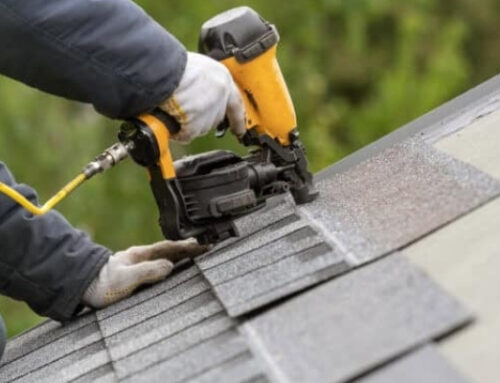Choosing the right siding for your home is important for both its appearance and functionality. The siding material not only enhances how your home looks but also protects against weather conditions and pests. With numerous options available, picking the suitable siding can be overwhelming. You’ll want a material that matches your home’s style, fits your budget, and meets your maintenance preferences. This article guides you through selecting the right siding, considering factors like durability, maintenance, cost, and environmental impact. By the end, you will be well-informed, enabling you to decide on a siding material that complements your home’s specific requirements, enhancing its appearance and ensuring long-lasting protection. Let’s explore the world of siding materials to find the perfect fit for your home.
1. Evaluate your home’s style.
When selecting a siding material for your home, it is essential to consider the overall style and aesthetic of your property. Evaluating your home’s style will help you determine which siding materials will complement and enhance its visual appeal. Take a close look at the architectural design, color palette, and existing exterior elements such as trim, windows, and doors. Is your home traditional, contemporary, or a mix of different styles? Understanding your home’s style will guide you in choosing a siding material that seamlessly integrates with the overall look and feel of your property, creating a cohesive and visually pleasing exterior.
2. Consider maintenance and durability.
 Another crucial factor to consider when choosing the right siding material for your home is maintenance and durability. You want to select a material that will not only withstand the elements but also require minimal upkeep over time. Opting for a low-maintenance siding material can save you time, effort, and money in the long run. Look for materials that are resistant to rot, insect infestations, and warping. Additionally, consider the lifespan of the siding material. Some materials may require more frequent replacement or significant repairs, while others can last for decades with minimal maintenance. Assessing the maintenance requirements and durability of different siding materials will help you make an informed decision that ensures your home remains beautiful and protected for years to come.
Another crucial factor to consider when choosing the right siding material for your home is maintenance and durability. You want to select a material that will not only withstand the elements but also require minimal upkeep over time. Opting for a low-maintenance siding material can save you time, effort, and money in the long run. Look for materials that are resistant to rot, insect infestations, and warping. Additionally, consider the lifespan of the siding material. Some materials may require more frequent replacement or significant repairs, while others can last for decades with minimal maintenance. Assessing the maintenance requirements and durability of different siding materials will help you make an informed decision that ensures your home remains beautiful and protected for years to come.
3. Think about your budget.
When considering the right siding material for your home, it is essential to think about your budget. It’s important to have a clear understanding of how much you are willing to spend on the siding project, including both the material and installation costs. Keep in mind that different siding materials have varying price points, with some options being more budget-friendly than others. While it may be tempting to opt for a cheaper option upfront, it’s crucial to also consider the long-term costs. Cheaper materials may require more frequent repairs or replacement, ultimately costing you more in the future. Therefore, carefully evaluate your budget and strike a balance between affordability and quality to ensure that you choose a siding material that meets both your financial constraints and your home’s aesthetic and functional needs.
4. Research local weather conditions.
 To ensure that you decide the right siding material for your home, it is imperative to research and understand the local weather conditions in your area. Your home’s exterior will be constantly exposed to the elements, including rain, wind, snow, and extreme temperatures. By researching local weather conditions, you can determine the specific challenges your siding will face and select a material that is durable and weather-resistant. For example, if you live in an area with high humidity, you may want to select a siding material that is resistant to mold and moisture damage. Similarly, if you experience harsh winters with heavy snowfall, selecting a siding material that can withstand the weight and impact of snow is crucial. By considering the climate factors specific to your location, you can make an informed decision and ensure that your chosen siding material will stand up to the test of time and weather.
To ensure that you decide the right siding material for your home, it is imperative to research and understand the local weather conditions in your area. Your home’s exterior will be constantly exposed to the elements, including rain, wind, snow, and extreme temperatures. By researching local weather conditions, you can determine the specific challenges your siding will face and select a material that is durable and weather-resistant. For example, if you live in an area with high humidity, you may want to select a siding material that is resistant to mold and moisture damage. Similarly, if you experience harsh winters with heavy snowfall, selecting a siding material that can withstand the weight and impact of snow is crucial. By considering the climate factors specific to your location, you can make an informed decision and ensure that your chosen siding material will stand up to the test of time and weather.
5. Seek professional advice before deciding.
Before making a final decision on the siding material for your home, it is highly recommended that you seek professional advice. Consulting with a siding contractor or a professional in the field can provide valuable insights and expertise. They have in-depth knowledge of various siding materials and their suitability for different climates and architectural styles. A professional can assess your specific needs, budget, and preferences to recommend the most suitable options for your home. They can also provide guidance on the installation process and any maintenance requirements associated with each siding material. Seeking professional advice ensures that you make an informed decision based on expert opinions and helps you avoid costly mistakes in the long run. It provides a sense of tranquility to know that you have made the most suitable decision for the exterior of your residence.
Conclusion :
In the end, choosing the right siding material for your home is a decision that should not be taken lightly. It’s important to carefully consider all the factors, such as durability, maintenance, and cost, to make the best choice for your specific needs and preferences. Remember, the right siding can not only enhance the look of your home but also protect it from the elements for years to come. It’s always a good idea to consult with a professional contractor to ensure you are making an informed decision and investing in the best option for your home. With the right approach and careful consideration, you can find the perfect siding material that will truly make your house feel like a home.






